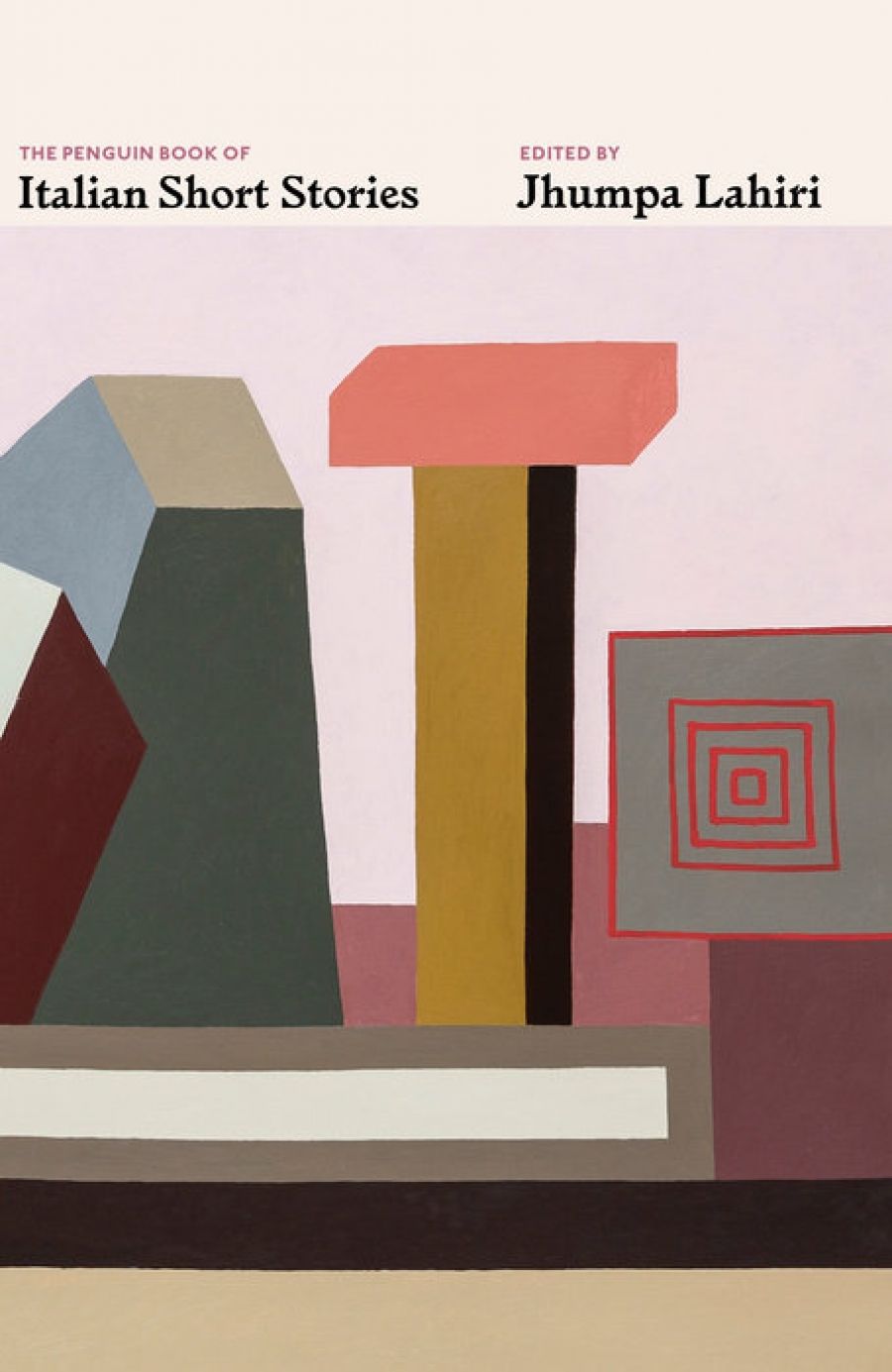
- Free Article: No
- Contents Category: Fiction
- Review Article: Yes
- Online Only: No
- Custom Highlight Text:
In 1942, Elio Vittorini managed to circumvent the Fascist censors and publish Americana, a landmark anthology of thirty-three American authors. The aim of this massive project – over a thousand pages with translations into Italian carried out by ten significant literary figures of the time, including Alberto Moravia, Cesare Pavese, and Nobel Laureate poet Eugenio Montale – was to introduce iconic American voices to Italian readers. In assembling her substantial collection of forty Italian short stories, Jhumpa Lahiri set herself the same objective but in reverse: to introduce Italian authors to American readers. Lahiri declares Vittorini was her ‘guiding light’, not only for the general design of the work but also ‘in writing the brief author biographies – intended as partial sketches and not definitive renderings – that preface each story’.
- Grid Image (300px * 250px):

- Book 1 Title: The Penguin Book of Italian Short Stories
- Book 1 Biblio: Penguin Classics, $49.99 hb, 515 pp, 9780241299838
Many writers included in Lahiri’s collection may be familiar to non-Italian readers (Italo Calvino, Primo Levi, Leonardo Sciascia), while others, such as Natalia Ginzburg and Antonio Tabucchi, have been introduced to English-language readers by new translations in recent years. A few, like Silvio D’Arzo and Antonio Delfini, are little known, even in Italy. Two ‘basic parameters’ governed Lahiri’s selection of authors: removing all living authors from the list, and limiting the number so that the book would not become ‘an unwieldy physical object’. More interesting are the motivations that led to this initiative: to bring together the greatest possible number of authors who had inspired and nurtured her love for Italian literature, giving priority to women and lesser-known writers; to produce a volume that ‘others would be excited to teach from, and that students, ideally, would be eager to read’. The final list effectively constitutes a personal canon: Lahiri has chosen authors, who, like her, have ‘questioned and redefined themselves over time, some defiantly distancing themselves from earlier phases of their work’.
The stories are arranged in reverse alphabetical order by the authors’ last names. It may be, as Lahiri claims, that this is ‘an arbitrary sequence’ and that it is ‘serendipitous that Elio Vittorini appears first’, but the reverse ordering also recalls Tabucchi’s famous ‘gioco del rovescio’ (‘backwards game’), which rests on the assumption that there are always two sides of a coin and invites the reader to pierce the surface of the text to see the ‘reverse side’ of the writing. Lahiri invites us to see the other side of the authors she has included in her selection, all of whom were, at the same time, ‘almost always other things’: scientists, visual artists, politicians, musicians. Remarkably, ‘the vast majority were translators, living, reading and writing astride two languages or more’. Her own literary evolution, marked by the well-publicised decision she made in 2012 to move to Rome and to read and write only in Italian, may have made her particularly alert to this aspect. She explicitly affirms her affinity with those for whom the ‘act of translation [is] central to their artistic formation’ and with those who made choices to write in other languages ‘complicating their texts and their identities further still’.
 Pulitzer Prize-winner Jhumpa Lahiri, September 2013 (photograph by Lynn Neary/Wikimedia Commons)
Pulitzer Prize-winner Jhumpa Lahiri, September 2013 (photograph by Lynn Neary/Wikimedia Commons)
Language has a very particular relevance for this particular anthology. As a first step, Lahiri had to find translations of the selected stories, or translators for previously untranslated stories: sixteen of the stories had not been published before in English and nine have been re-translated for this collection. Lahiri translated six stories from Italian herself, thus further immersing herself in the fabric of the language. Her translations are clean and elegantly executed throughout. Lahiri pays special attention to form, hence the variety of styles that we encounter in the selected stories. Pleasingly, the new translations and re-translations capture the nuances of the polyphonic, individual styles of the various authors.
It is not possible, in the space of a short review, to do justice to all of the vibrant stories contained in this volume. The ones I preferred were those that focused on the thematic triad of time, place, and memory, such as the strange journey described by Tabucchi (‘Against Time); the painful parody by Pavese (‘Honeymoon’); journeys that are no less difficult in memory (Anna Maria Ortese, ‘A Pair of Eyeglasses’, Alba De Céspedes, ‘Invitation to Dinner’). And memory is not always mythical, as in Giuseppe Tomasi di Lampedusa’s ‘The Siren’. More often, it is a perilous swamp (Fabrizia Ramondino, ‘The Tower’) or a container of painful symbols (Romano Bilenchi, ‘A Geographical Error’). A highlight of the anthology is a very short story by Goffredo Parise, entitled ‘Melancholy’ and translated by Lahiri, in which a seven-year-old girl experiences the emotion in a deeply personal social context before her grandfather puts a name to it. It is an act of translation between the felt and the spoken.
This is an emotionally resonant anthology, diverse in content and a great introduction for English-speaking readers to unfamiliar and renowned writers from Italy. A final point worth noting is that Lahiri has completed her backwards game by publishing an Italian version of the collection, two months after the release of the Penguin volume. Racconti italiani (Guanda) has been enthusiastically received in Italy, demonstrating that translations and anthologies can also be used to return an image of a culture that goes beyond the literary mainstream.


Comments powered by CComment